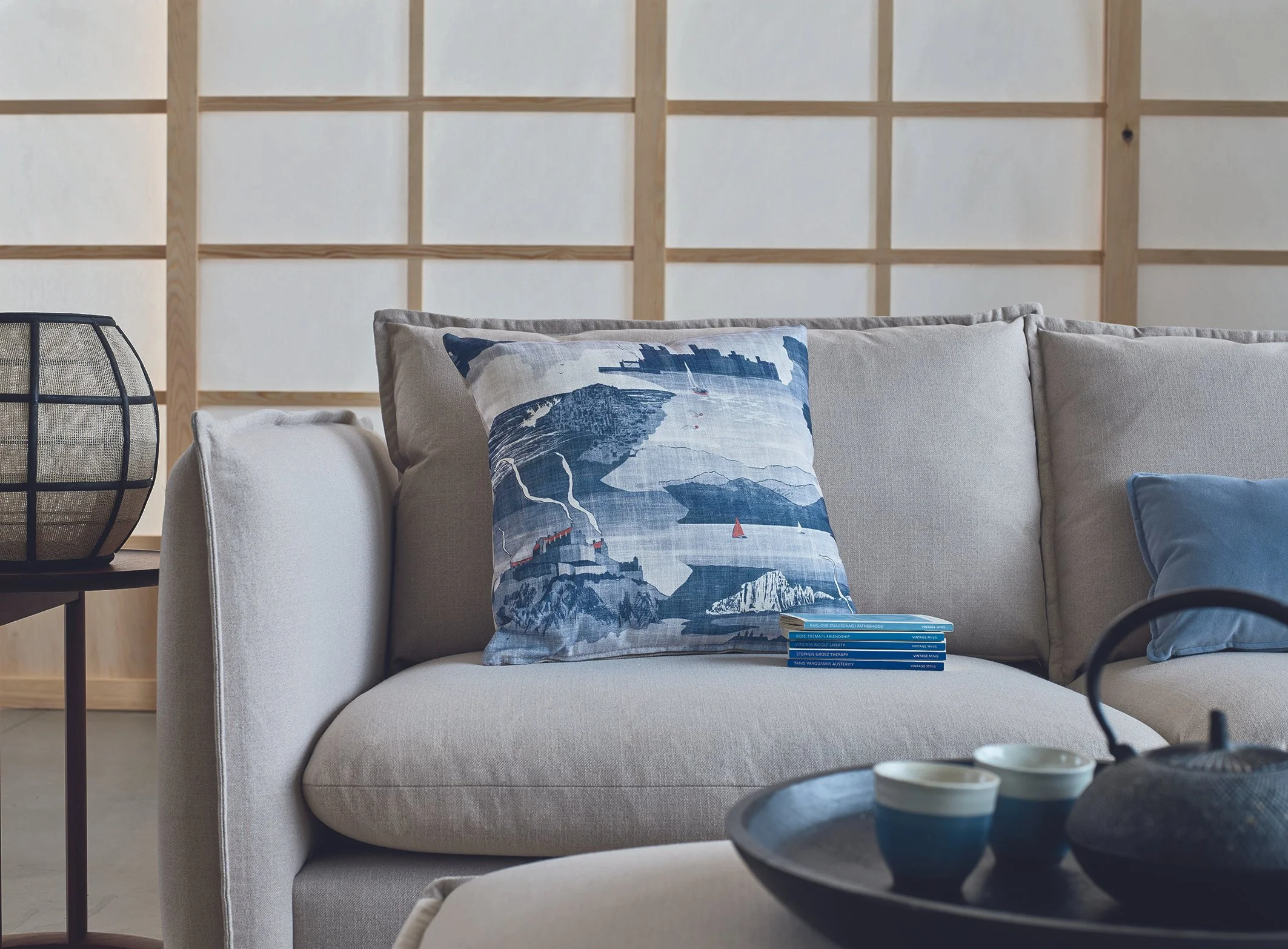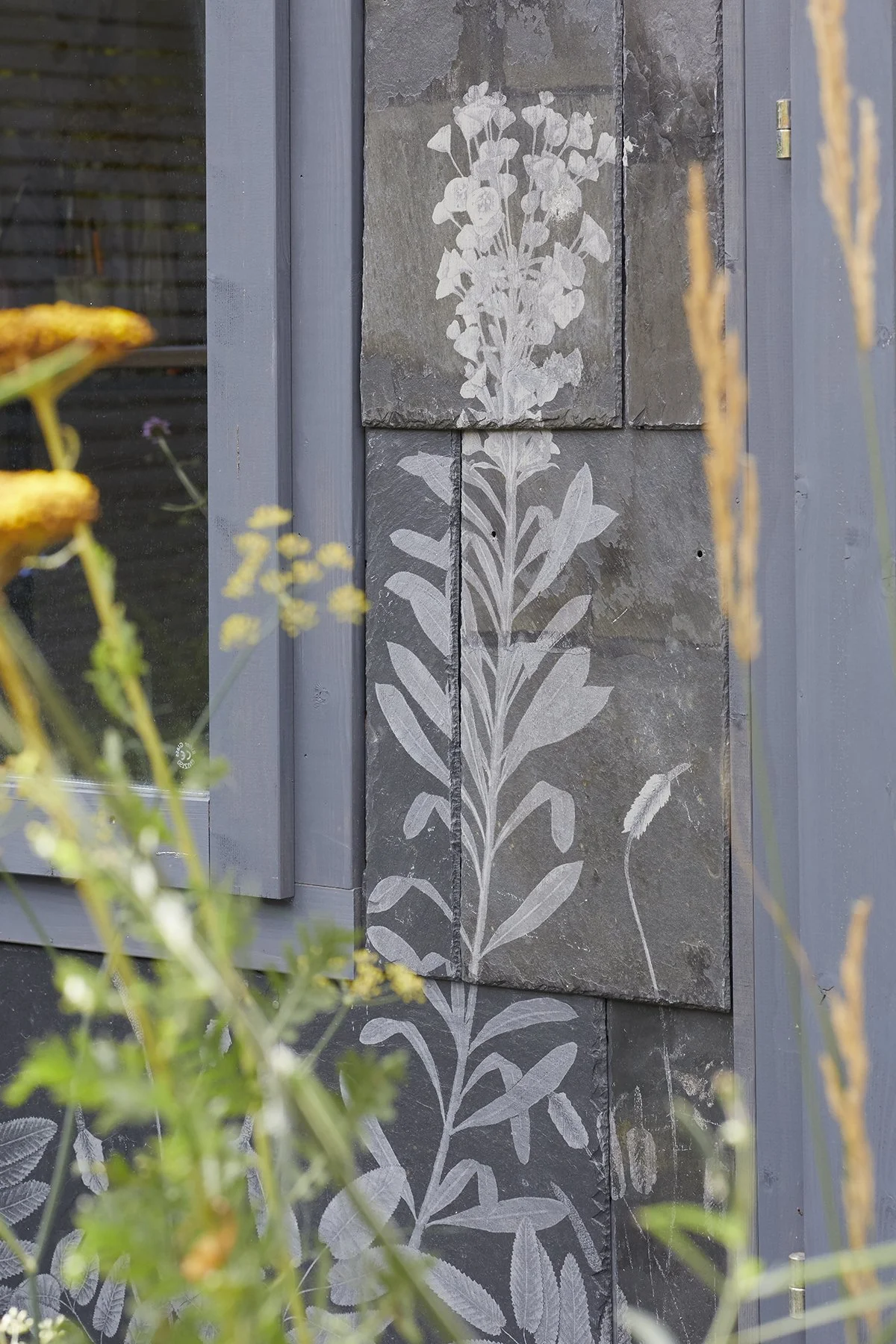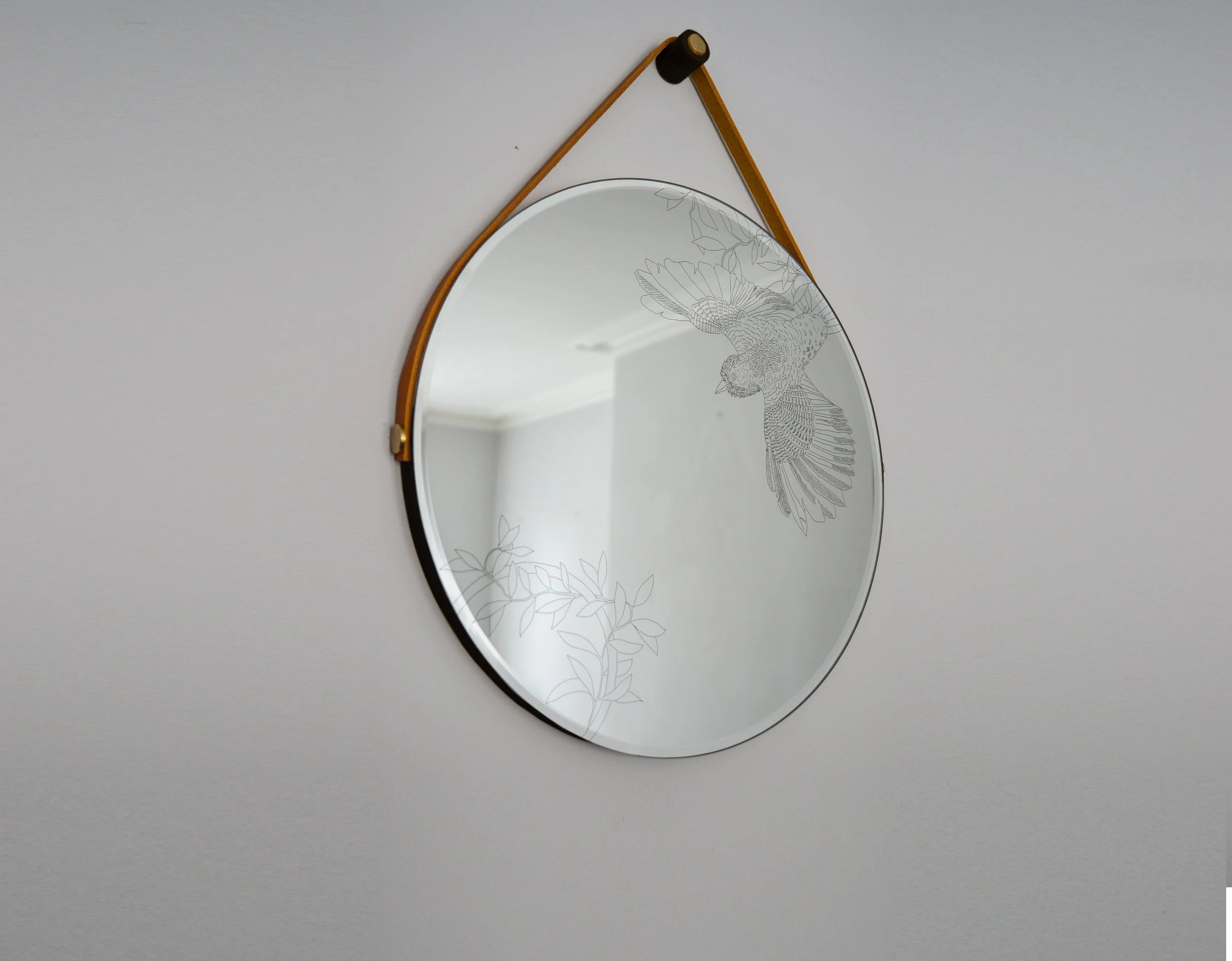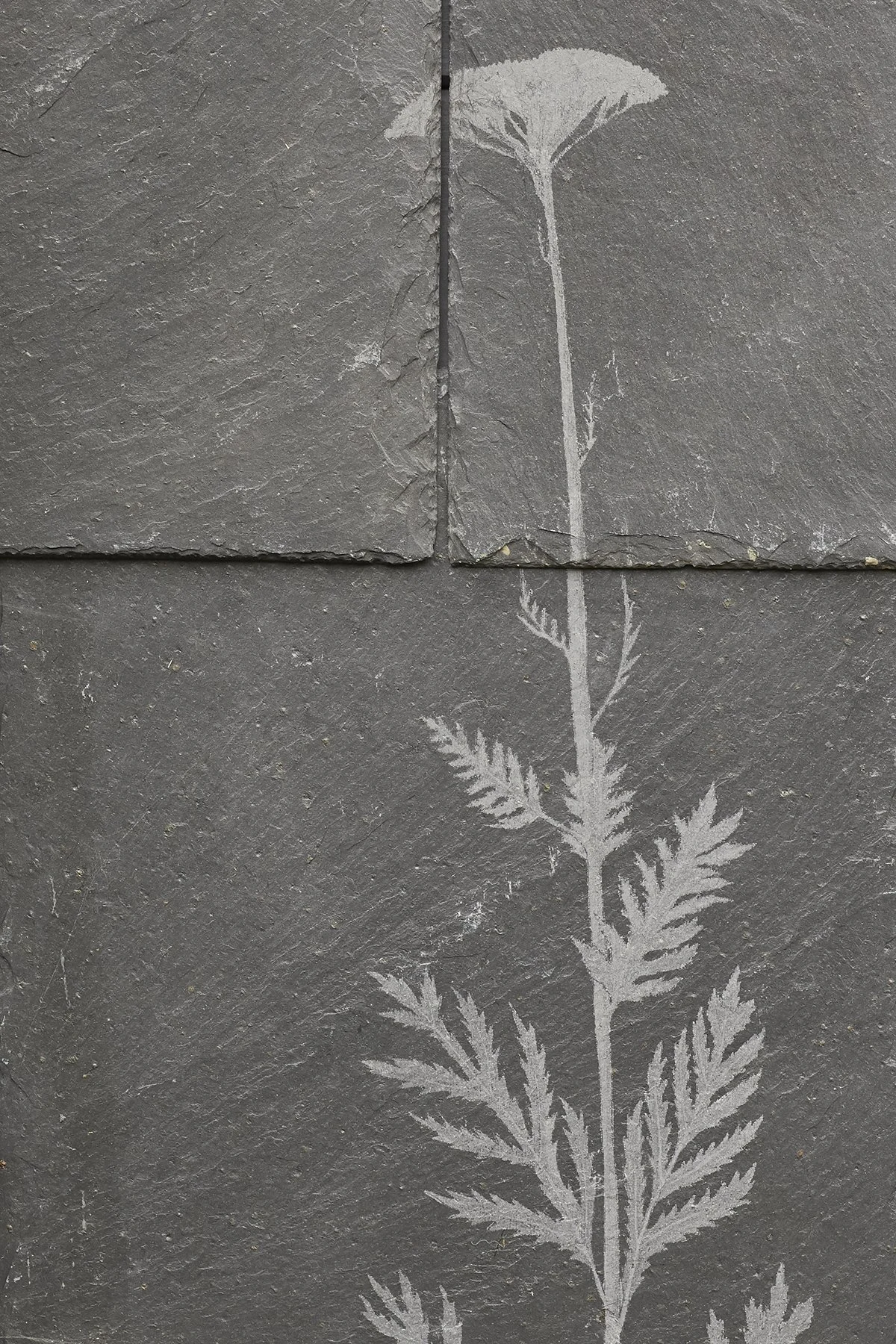Interview with Daniel Heath
While a compelling interview with an established and highly accomplished designer within their field, this article also successfully challenges 2 fairly common tropes within the design world. The first is that the term “handmade in the UK” is a phrase from a bygone era, while the second opposes the notion that the study of textiles leads only to output in fabric or other soft materials. Designer Daniel Heath initially delved into the discipline at Loughborough University before extending his studies on the Textiles MA at the RCA in 2006. By the time he set up his first studio from the roof space of a jaycloth factory in Luton during his MA, he had already attracted attention from the design world for his hand-drawn and hand-printed wallpapers. And while this offered a way into the industry, gaining plenty of interior clients along the way, a naturally inquisitive nature led him to explore a range of processes and materials, and now his innovative approach to surface design is as synonymous with the studio as his narrative rich and distinct drawing style. A huge part of this approach has long included the reclamation of salvaged materials, notably those found in our buildings such as slate and timber, and he has always tried new techniques for applying his designs. Over the years he has laser etched mirror, corduroy, and oak while still screen printing onto paper and fabric, as well as hard surfaces including table tops. These bespoke services have led to numerous commissions and collaborations, not least with DFS where he created an upholstery collection for sofas designed to inspire Team GB during the Tokyo Olympics. The designs were based on British vistas and famous landmarks or landscapes and served as postcards from home for the athletes, rendered in the style of Japanese Ukiyo-e. I was keen to find out more about how he started and continues to sustain his distinct and impressive studio.
JB: Drawing is a central tenet of your practice, and you’ve drawn everything from circus performers to peacocks over the years. How have you, or do you, go about selecting a visual theme to draw from?
DH: When I’m coming up with a collection, I will start with an idea that comes from a book, a documentary, or an article I have read that piques my interest and creates a spark of inspiration. Whatever I am exploring as a theme has to be interesting enough to maintain my interest or have enough tangents and twists to create an interesting narrative and maintain my interest as I fill up sketchbooks with imagery. It needs to be something where the more you dig, the more you want to find.
JB: In a world where digital processes, not least AI-assisted ones, are prevalent, it seems quite rare to have a studio in which you draw and even make much of the work yourself. It also feels like that adds a more personal touch to your output. It must take a lot of work and presence to keep things evolving whilst retaining such a strong studio aesthetic?
DH: Each drawing is part of a narrative, whether that’s within the design itself; how the elements relate to one another, or how it relates to the space in which it will ultimately exist. Over the years I think I have a developed better appreciation of my role as a storyteller in my imagery. More is more, in terms of my conversational designs. I don’t think people come to me for minimalism!
That said, some of my more recent designs have been a little more selective and individual in terms of the details on display. The British Botanical Slate Collection was conceived during the lockdown, which perhaps explains a lot about my decision, and came about while drawing and sketching plants from my own garden as a form of direct inspiration. Working with reclaimed London roof slate from a local salvage yard in Wanstead, each individual slate tile was delicately laser engraved within a couple of miles from the site, with a new imagery style I developed while in isolation. As such, it’s an ode to both local flora and reclaimed materials.
JB: I want to come back to materials in a moment, but sticking with drawing for now, are there particular processes or unique techniques that you find yourself coming back to? I wonder whether the experience of drawing during the lockdown highlighted any?
DH: I have returned many times to particular drawing techniques or tools that I particularly enjoy; that give a certain aesthetic to the outcome. I started using Chinagraph pencils to create textural and tonal effects in my screen prints about 12 years ago, which has become a signature tool.
I also find my use of colour evolves, most likely inspired by personal experience. Colour is so emotive! I’m into verdant pea green at the moment and I’m sneaking it in everywhere. Repeat pattern and screen printing have been there right from the start though; they were the primary skills I developed when on the textiles course at university and they are still a mainstay. Although I don’t rely only on repeat these days; the slates are a testament to that, as well as my mirrors, which have singular bespoke designs created to fit the material involved.
JB: Let’s get into materials then, because they are so important to what you do. Can you go into the move from paper, which was so central to your initial wallpaper designs, to other, often hard materials?
DH: I was always interested in materials and what you could do with them. Finding a process and realising it opened up a whole new array of materials and applications has been exciting for me and has driven my processes forward. It’s a process driven by design-led by “what if?” experimentation and problem-solving. I started on paper because it was all about the focus of imagery and design, and offered a great focus for applied drawing. However diversifying the material created challenges to overcome, which is something I thrive on.
I was working on a few projects with the reuse brand Retrouvius and the team there invited me to have a look around the warehouse and take a few bits away with me to see if I could print onto them. It was an exciting moment and I knew I’d have to push myself and develop some new skills to do so. I ended up learning Adobe Illustrator and etching my drawings onto some 150-year-old salvaged oak panels. I loved how the narrative of the artefact or material combined with the stories I was telling through my imagery, so I was inspired to keep going on that path and it’s progressed from there. I’ve since etched and printed directly on old iroko school desks, various pieces of furniture, textiles and the aforementioned mirror and slate, amongst other things!
JB: Given that you started on that path relatively early, have you noticed shifts in the market and client tastes, particularly around the use of reclaimed materials?
DH: I think that the market has changed, forcing a lot of people to look at how their work could become more sustainable, because these are expected considerations now in a lot of ways, which is a great thing. Back then, we didn’t set out to make a sustainable product, we just wanted to give something beautiful a chance to remain in use and to give people joy in a new context. It is a shame to see beautiful things go into landfill. But now sustainability is a necessity. I think if there is competition there then that is healthy, although I am not particularly competitive to be honest.
JB: Your hand is ever-present in the work because you always draw the designs – how significant is the fact that much of the work is hand printed or made, and with it, what is your relationship to digital processes and technologies?
DH: This has always been a big aspect in the work because everything I do is made to order. If I had a huge amount of each thing to sell, I would be constantly thinking about selling, warehousing etc. I’m not really interested in that. I like making things. I use digital UV print to put complex imagery onto hard surfaces, usually generating imagery that couldn’t be printed by hand. But I also use laser engravers to etch onto all sorts of materials. It’s always worth remembering that handmade processes are usually technology that happens to have been around for longer. That’s how I like to think of it. You can use any technology and approach it with an ethos of craft to make considered outcomes.
JB: You have a history of running workshops in which you share your skills, as well as teaching, what’s the drive behind this and what can people expect of these events?
DH: My workshops will usually show someone how to take their idea and turn it into something that can be printed by hand onto a material. I always like people to come away with something they have made, as well as the experience of making it! I like to make it accessible, so anyone can tap into their creative side.
I like showing people how to do things and demystifying processes. It is such a buzz when someone uses a process successfully for the first time, even more so when they master it!
I have actually just launched some new workshops on Wecandoo, and will be hosting a course this coming February at the V&A.
This article was first published by Design Insider






